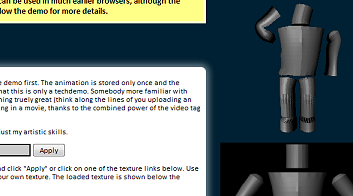I’m currently trying to get a video of the last demo online and all things considered, it has been a good experience… except for Apple’s Safari browser. It’s nice that they support the video tag, but their implementation is pretty much useless:
-
Don’t say that you support a feature when you really don’t.
Apple’s implementation lacks support for the controls attribute, which tells the browser to display a native interface for video playback. I don’t really have a problem with this, but why the heck does Safari tell me that it does support it?
The controls attribute is treated as if it was supported with the controls property mirroring the value of the controls attribute. So myVideoElement.controls is true or false instead of the undefined I’d expect for an unknown attribute.
In the end, that means that I have to do browser sniffing to load my own interface for Safari and I thought that we had all agreed by now that this is a bad thing
-
Don’t say that you support h.264 when you really only support is your own special flavour.
There’s a lot discussion going on over which codec to use for video, but something that’s often overlooked is that Apple’s h.264 decoder is a proprietary mess that will only accept Quicktime created MP4s. Since video in Safari uses the Quicktime backend that means that you won’t be able to actually use h.264 unless you fork some cash over to Apple for Quicktime Pro, even when there are many better and cheaper alternatives. This is exactly the lock-in that shouldn’t happen with video.
The only real alternative for now is using the MPEG-4 Advanced Simple Profile (better known as DivX or XviD) and suddenly all the better quality you were promised in exchange for having to use a proprietary format is gone.


